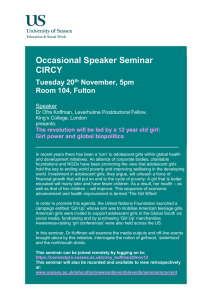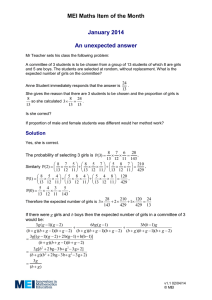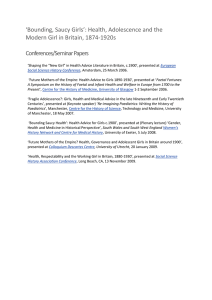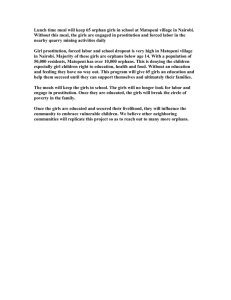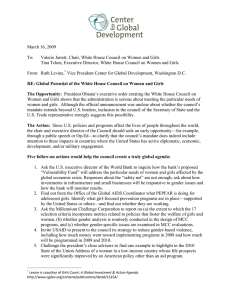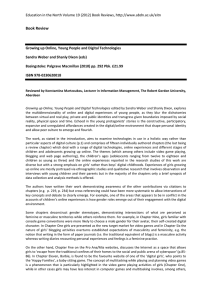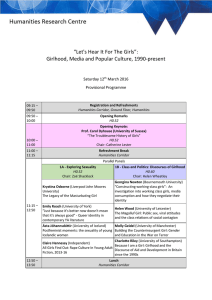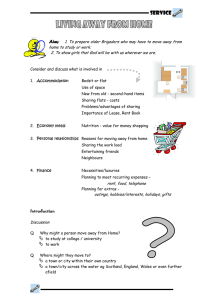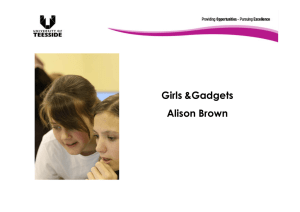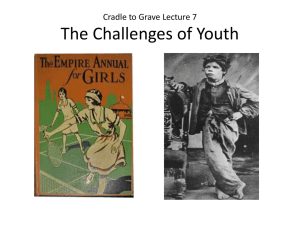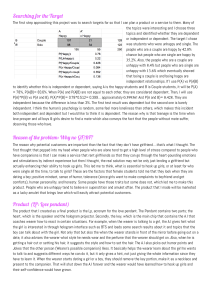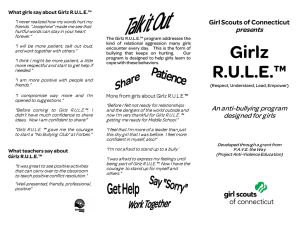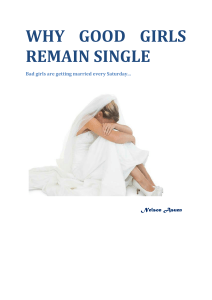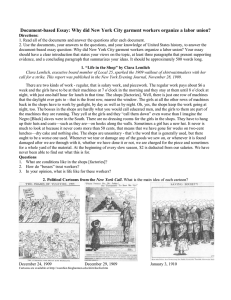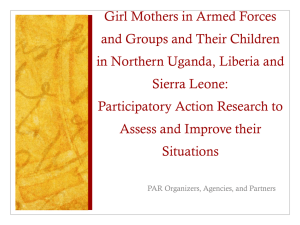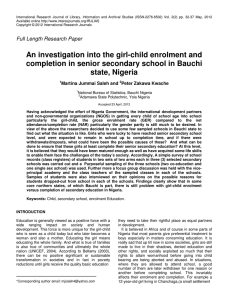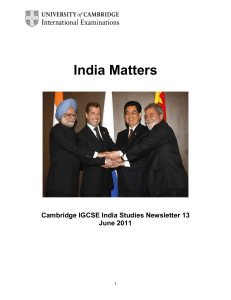‘Let's Hear It For The Girls’: Girlhood, Media and Popular... Saturday 12th March 2016
advertisement
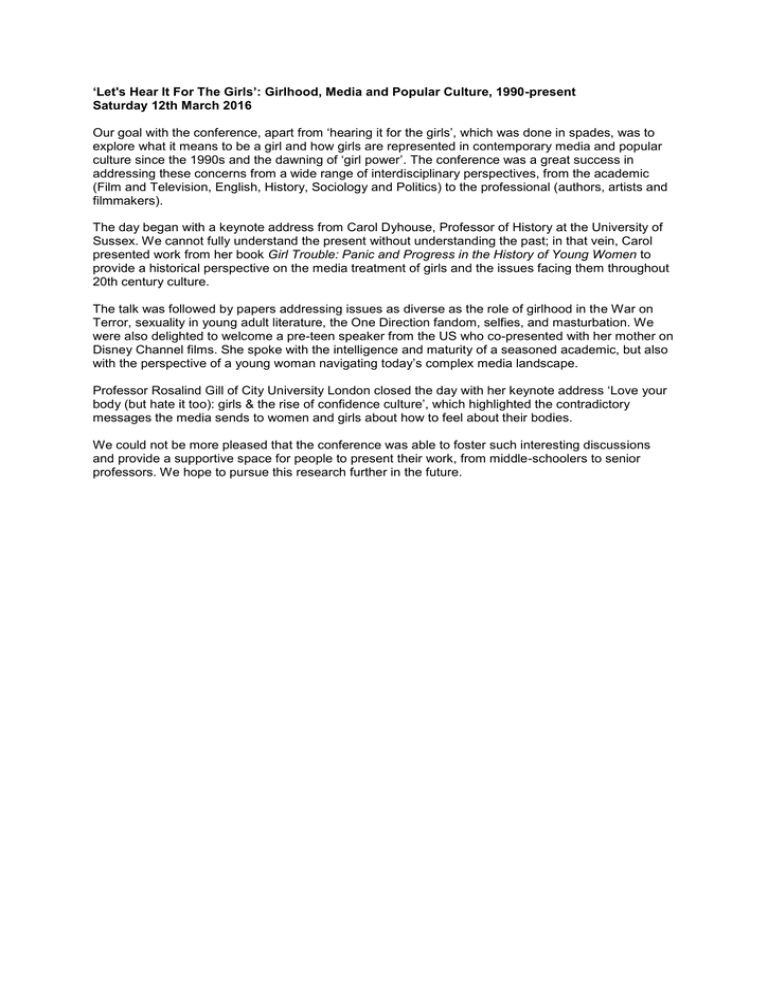
‘Let's Hear It For The Girls’: Girlhood, Media and Popular Culture, 1990-present Saturday 12th March 2016 Our goal with the conference, apart from ‘hearing it for the girls’, which was done in spades, was to explore what it means to be a girl and how girls are represented in contemporary media and popular culture since the 1990s and the dawning of ‘girl power’. The conference was a great success in addressing these concerns from a wide range of interdisciplinary perspectives, from the academic (Film and Television, English, History, Sociology and Politics) to the professional (authors, artists and filmmakers). The day began with a keynote address from Carol Dyhouse, Professor of History at the University of Sussex. We cannot fully understand the present without understanding the past; in that vein, Carol presented work from her book Girl Trouble: Panic and Progress in the History of Young Women to provide a historical perspective on the media treatment of girls and the issues facing them throughout 20th century culture. The talk was followed by papers addressing issues as diverse as the role of girlhood in the War on Terror, sexuality in young adult literature, the One Direction fandom, selfies, and masturbation. We were also delighted to welcome a pre-teen speaker from the US who co-presented with her mother on Disney Channel films. She spoke with the intelligence and maturity of a seasoned academic, but also with the perspective of a young woman navigating today’s complex media landscape. Professor Rosalind Gill of City University London closed the day with her keynote address ‘Love your body (but hate it too): girls & the rise of confidence culture’, which highlighted the contradictory messages the media sends to women and girls about how to feel about their bodies. We could not be more pleased that the conference was able to foster such interesting discussions and provide a supportive space for people to present their work, from middle-schoolers to senior professors. We hope to pursue this research further in the future.




